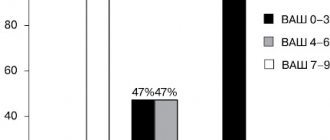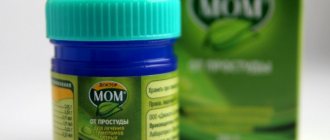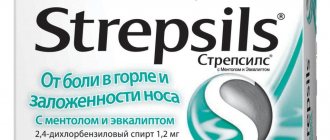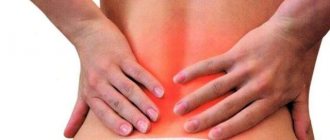September 9, 2022 Which remedy should I choose for a sore throat or diseases of the oral mucosa? Almost all diseases of the oral cavity are accompanied by inflammation. Inflammation is a pathological process that develops in response to a damaging factor.
There are three stages of inflammation:
- 1. Damage to cells and tissues. At this stage, symptoms of the disease appear, including pain.
- 2. Increased vascular permeability , release of inflammatory mediators. Swelling appears and symptoms persist.
- 3. Restoration of damaged tissues. At this stage, recovery occurs.
Therefore, a remedy for the treatment of inflammatory diseases of the oral cavity must eliminate pain, inflammation and pathogens.
Various drugs are used to treat inflammatory diseases, including antiseptics and NSAIDs.
How do non-steroidal anti-inflammatory drugs work?
NSAIDs (non-steroidal anti-inflammatory drugs) are a group of drugs that have anti-inflammatory, analgesic and antipyretic effects. Such drugs are known to everyone who has ever had a headache (for example, acetylsalicylic acid and ibuprofen).1
NSAIDs block the synthesis of special enzymes, thereby disrupting the production of prostaglandins E2 and I2 (physiologically active substances in our body), which are mediators of inflammation and cause swelling, fever and enhance the functioning of pain receptors.
Composition of multicomponent drugs for sore throat
| Name | Antiseptic | Antibiotic | Anesthetic | NSAIDs | Vitamins | Other components |
| Dr. Theiss Angi Sept | Dichlorobenzyl alcohol | — | — | — | — | Menthol, anethole, peppermint oil |
| Astrasept | Amylmetacresol + dichlorobenzyl alcohol | — | — | — | — | — |
| Agisept | — | — | — | — | — | |
| Hexoral Tabs classic | — | — | — | — | — | |
| Gorpils | — | — | — | — | — | |
| Rinza Lorsept | — | — | — | — | — | |
| Strepsils | — | — | — | — | — | |
| Strepsils with a warming effect | — | — | — | — | — | |
| Strepsils with cooling effect | — | — | — | — | — | |
| Suprima-ENT | — | — | — | — | — | |
| Hexoral Tabs Extra | — | Lidocaine | — | — | — | |
| Rinza Lorcept Anesthetics | — | — | — | — | ||
| Strepsils Plus | — | — | — | — | ||
| Strepsils with vitamin C | — | — | — | Ascorbic acid | — | |
| Neo-Angin | — | — | — | — | Levomenthol | |
| Strepsils with menthol and eucalyptus | — | — | — | — | ||
| Grammidin for children | Cetylpyridinium chloride | Gramicidin S | — | — | — | — |
| Grammidin neo | — | — | — | — | ||
| Grammidin with neo anesthetic | Oxybuprocaine hydrochoride | — | — | — | ||
| Septolete Plus | — | Benzocaine | — | — | — | |
| Theraflu Lar Menthol | — | Lidocaine hydrochloride | — | — | — | |
| Novosept Forte | — | Tetracaine hydrochloride | — | — | Zinc sulfate | |
| Septolete Total | — | — | Benzydamine hydrochloride | — | — | |
| Laripront | Dequalinium chloride | — | — | — | — | Lysozyme hydrochloride |
| Sebidin | Chlorhexidine hydrochloride | — | — | — | Ascorbic acid | — |
| Anti-Angin Formula | — | Tetracaine | — | — | ||
| Hexalize | Biclotymol | — | — | — | — | Enzyme Lysozyme + anti-inflammatory enoxolone |
| Septogal | Benzalkonium chloride | — | — | — | — | Menthol, thymol, mint oil, eucalyptus oil |
| Septolete, Septolete D | — | — | — | — | Peppermint oil, eucalyptus, levomenthol, thymol | |
| Stopangin 2A, Stopangin 2A forte | — | Tyrothricin (1 mg and 2 mg in Stopangin 2A and Stopangin 2A forte) | Benzocaine | — | — | — |
| Grammidin with neo anesthetic | — | Gramicidin S | Oxybuprocaine hydrochloride | — | — | — |
| Lysobacter | — | — | — | — | Pyridoxine hydrochloride | Lysozyme |
Types of non-steroidal anti-inflammatory drugs
NSAIDs come in non-selective (classical) and selective (selective) actions:
| TYPE | ACTION | ||
| type: | Classic NSAIDs | action: | They block the production of an important enzyme, cyclooxygenase-1, which is responsible for protecting the gastric mucosa |
| type: | Selective NSAIDs | action: | They block only cyclooxygenase-2, which is responsible for inflammation. That is, they have a targeted effect on inflammation.2 |
Flavors
| Flavor | A drug |
| Pineapple | Agisept |
| Suprima-ENT | |
| Anise-licorice | Novosept Forte |
| Orange | Agisept |
| Astrasept | |
| Hexoral tabs classic, Hexoral tabs extra | |
| Gorpils | |
| Novosept Forte | |
| Rinza Lorsept, Rinza Lorsept Anesthetics | |
| Stopangin 2A | |
| Strepsils with vitamin C | |
| Suprima-ENT | |
| Orange-menthol | Astrasept |
| Cherry | Dr. Theiss Angisept |
| Neo-angin | |
| Cherry-menthol | Astrasept |
| Ginger-lemon | Astrasept |
| Classic | Agisept |
| Strawberry | Gorpils |
| Stopangin 2A | |
| Suprima-ENT | |
| Citric | Agisept |
| Astrasept | |
| Hexoral tabs classic, Hexoral tabs extra | |
| Gorpils | |
| Dr. Theiss Angi Sept | |
| Rinza Lorsept, Rinza Lorsept Anesthetics | |
| Stopangin 2A | |
| Suprima-ENT | |
| Crimson | Grammidin for children |
| Suprima-ENT | |
| Honey-lime | Septolete Plus |
| Honey-lemon | Agisept |
| Astrasept | |
| Hexoral tabs classic, Hexoral tabs extra | |
| Gorpils | |
| Novosept Forte | |
| Rinza Lorsept, Rinza Lorsept Anesthetics | |
| Strepsils | |
| Strepsils Intensive | |
| Suprima-ENT | |
| Honey-linden | Dr. Theiss Angi Sept |
| Menthol | Theraflu LAR Menthol |
| Suprima-ENT | |
| Menthol-eucalyptus | Agisept |
| Astrasept | |
| Gorpils | |
| Novosept Forte | |
| Strepsils with menthol and eucalyptus | |
| Mint Lemon | Tantum Verde |
| Mint | Grammidin Neo |
| Stopangin 2A | |
| Sea buckthorn | Dr. Theiss Angi Sept |
| Blackcurrant | Hexoral tabs classic, Hexoral tabs extra |
| Rinza Lorsept, Rinza Lorsept Anesthetics | |
| Blackcurrant-menthol | Astrasept |
| Sage | Dr. Theiss Angi Sept |
| Eucalyptus | Suprima-ENT |
How do antiseptics work?
Antiseptics are a group of drugs that are used to destroy microorganisms on the surface of the skin and mucous membranes. In everyday life, they are often used to treat wounds (for example, hydrogen peroxide, chlorhexidine).
Antiseptics cause protein coagulation, as a result of which the sedimentation of microbial cell proteins prevents the formation of protein chains. Some groups of antiseptics cause the death of microorganisms through oxidation or increase the permeability of the microbial cell membrane and cause its death. Alcohol antiseptics dehydrate microbial cells, causing them to die.
Composition of monocomponent drugs for sore throat
| Compound | Name |
| Antiseptic | |
| Acetylaminonitropropoxybenzene | Falimint |
| Ambazon | Faringosept |
| Cetylpyridinium chloride monohydrate | Septolete Neo |
| Gramicidin S | Gramicidin S |
| NSAIDs | |
| Benzydamine hydrochloride | Tantum Verde |
| Flurbiprofen | Strepsils Intensive |
Which drug should I choose?
For sore throat, tonsillitis and diseases of the oral mucosa (stomatitis, gingivitis and others), the question arises: which drug to buy, an antiseptic or an NSAID?
Pros and cons of antiseptics
Antiseptics destroy microorganisms only on the surface, but they do not penetrate the tissues, and the source of inflammation is always located inside. In addition, the antiseptic does not eliminate the pain and swelling that inevitably accompanies the inflammatory process. An antiseptic, working on the surface, can destroy normal microflora and reduce the natural protective function of the mucous membrane, thereby exacerbating inflammation. Also, some antiseptics cause the death of lymphocytes (cells of the immune system), which also weakens the body’s defenses.3 In addition, some antiseptics affect viruses only in the first 12 hours, when there are no symptoms yet and do not stop the reproduction of the virus.4,5 It is important to remember that some antiseptics cannot be used for a long time, because this leads to disruption of the microflora.
It is important to remember that some antiseptics cannot be used for a long time, because this leads to disruption of the microflora.
There are also many drugs consisting of an antiseptic and an anesthetic, most often Lidocaine. But Lidocaine has a very short-term effect and is also capable of causing swelling.6 However, such drugs do not have any effect on the inflammation itself, but only briefly relieve pain and kill microorganisms on the surface of the mucosa.
| Action | Antiseptics | Local NSAIDs |
| Anti-inflammatory | ||
| Against pain | ||
| Against bacteria | ||
| Against mushrooms |
Pros and cons of NSAIDs
Classic non-steroidal anti-inflammatory drugs eliminate pain, reduce swelling, reduce temperature and block inflammation. NSAIDs penetrate well into tissues and can accumulate there, affecting the site of inflammation for a long time.
But classic (non-selective) NSAIDs have a negative effect on the digestive system (gastritis, ulcers), cause allergic reactions and have a toxic effect on the liver. Therefore, their long-term use is highly undesirable. And it is worth remembering that the use of such drugs is limited during pregnancy.
Therefore, for inflammatory diseases of the oral cavity, a drug is needed that has a complex effect, but does not harm the body.
Purpose depending on age
| Age | Trade name |
| Children over 3 years old and adults | Imudon |
| Ismigen | |
| Lysobacter | |
| Tantum Verde | |
| Faringosept | |
| Children over 4 years old and adults | Grammidin for children |
| Grammidin Neo | |
| Grammidin with neo anesthetic | |
| Gramicidin S | |
| Septogal | |
| Septolete | |
| Septolete D | |
| Septolete Neo | |
| Children over 5 years old and adults | Agisept |
| Anti-Angin Formula | |
| Gorpils | |
| Dr. Theiss Angisept | |
| Strepsils | |
| Strepsils with vitamin C | |
| Strepsils with menthol and eucalyptus | |
| Falimint | |
| Children over 6 years old and adults | Hexalize |
| Hexoral tabs classic | |
| Neo-Angin | |
| Septolete Plus | |
| Strepsils with a warming effect | |
| Suprima-ENT | |
| Theraflu LAR Menthol | |
| Children over 12 years old and adults | Hexoral tabs extra |
| Sebidin | |
| Strepsils intensive | |
| Strepsils with cooling effect | |
| Strepsils Plus | |
| Adults (from 18 years old) | Novosept forte |
| Septolete total | |
| Stopangin 2A | |
| Stopangin 2 A forte | |
| Age restrictions are not indicated in the instructions | Laripront |
Neo-angin
“Neo-angin” tablets are available both with and without sugar. It contains three active ingredients: dichlorobenzyl alcohol (antiseptic), amylmetacresol (disinfectant), levomenthol (refreshes and anesthetizes). Additional components are anise and mint oils with anti-inflammatory effects.
"Neo-angin" is prescribed for inflammation and infections in the oropharynx (including against the background of acute respiratory viral infections), for sore throats and stomatitis, in the complex therapy of pharyngitis and adenoiditis.
The tablets are taken after meals, dissolving slowly. You can take no more than 6 tablets per day (every 3-4 hours). Can be used by pregnant and lactating women; diabetics are better off choosing “Neo-angin” without sugar.
Neo-angin
Forms of the disease in children
All types of acute tonsillitis occur in children, but their prevalence depends on age.
Sore throat in a child 1-3 years of age is more likely (44% of cases) associated with a herpetic infection2. Only 35% of cases of the disease are the result of the activity of streptococci2.
In children aged 3 to 7 years, tonsillitis is more often bacterial, but streptococci are found only in 28% of cases2. Further, the picture changes towards the predominance of streptococcal infection and in adolescents it already accounts for up to 52% of cases of inflammation.
According to the picture of pathological changes in the tonsils1, inflammation of the tonsils can be:
- Erythematous (catarrhal), accompanied by redness of the tonsils and palatine arches. Viral tonsillitis, streptococcal (in the initial stages of development) or atypical, caused by Yersinia, mycoplasma, chlamydia, have such a clinical picture.
- Vesicular, characterized by the appearance of vesicles with turbid liquid on the tonsils, after opening of which small erosions form on the mucous membrane. This is how herpetic sore throats, tonsillitis with measles, and chickenpox occur.
- Membranous, in which purulent or necrotic films appear on the tonsils1. In lacunar forms, the film forms pus flowing from the lacunae, which is easily removed with a swab2. True films in diphtheria are firmly connected to the underlying tissue of the tonsils2.
According to the severity of the course, acute tonsillitis in children can be:
- light,
- moderate severity,
- heavy.
With the flow:
- without complications,
- with complications.
Up to contents
Hexoral Tabs
Hexoral Tabs throat lozenges are prescribed to both adults and children. The drug contains amylmetacresol and 2,4-dichlorobenzyl alcohol. Throat lozenges destroy pathogenic microflora on the mucous membrane, relieve inflammation and reduce pain. The advantage of this drug is that it acts instantly: pain, soreness, hoarseness, and coughing attacks go away. Hexoral Tabs has a pleasant taste and an affordable price.
Hexoral tabs
Pfizer (Pfizer), USA
Infectious and inflammatory diseases of the pharynx or oral cavity: - pharyngitis, sore throat and other inflammatory diseases of the pharynx;
- stomatitis; - gingivitis. from 99
5.0 1 review
333
- Like
- Write a review
Causes of sore throat in children
The disease is more common in school-age children and teenagers2. Sore throat in a child under 2 years of age is rare and is caused by insufficient development of the lymphoid tissue of the pharynx2.
In the vast majority of cases, tonsillitis develops as an infectious process2.
- Primary (banal) it can be caused by:
- beta-hemalytic streptococcus A;
- streptococci C G;
- staphylococci, pneumococci and other bacteria;
- viruses: respiratory parainfluenza viruses, adenoviruses, coronaviruses, respiratory syncytial viruses, roto- and enteroviruses, Coxsackie viruses, herpeviruses, etc.2
- Secondary inflammation can develop:
- for childhood infections (measles, rubella, scarlet fever);
- for syphilis, tuberculosis;
- as one of the symptoms of leukemia or agranulocytosis2.
The high susceptibility of children to viruses and streptococcus causes the widespread prevalence of tonsillitis. The source of infection is always a person – a patient or a carrier of the pathogen.
In the case of viral processes, these are patients with ARVI, measles, rubella, etc., in the case of catarrhal or purulent tonsillitis caused by streptococci, these are patients with tonsillitis.
The route of transmission of pathogens is airborne droplets or contact. Microbes are transferred from the patient into the environment along with sputum when sneezing and coughing. They are introduced into the body of a healthy baby with dirty hands, when using shared dishes, household items and hygiene items, during close contact, for example, when kissing.
The development of tonsillitis is promoted1,2:
- hypothermia, which often happens in the autumn-winter period and early spring;
- overwork, in particular excessive loads associated with training, attending numerous clubs and studios;
- unbalanced diet - predominance of carbohydrate foods in the diet, lack of vegetables and fruits rich in vitamins and essential microelements,
- the presence in the body of a focus of chronic infection (runny nose, sinusitis, caries, otitis media and others);
- decreased immunity after acute respiratory viral infections and other diseases suffered the day before;
- primary immunodeficiency.
Up to contents
Presence of sugar
| Name | Sugar | Sweeteners* |
| Adjisept classic, honey-lemon, menthol-eucalyptus | + | |
| Anti-Angin Formula | + | |
| Astrasept | + | |
| Hexalize | + | |
| Hexoral tabs classic, Hexoral tabs extra | + | |
| Gorpils | + | |
| Gramicidin S | + | |
| Grammidin for children | Aspartame, sorbitol | |
| Grammidin Neo | Sorbitol | |
| Dr. Theiss Angi Sept | + | |
| Imudon | + | |
| Laripront | + | |
| Lysobacter | + | |
| Neo-Angin | Isomalt | |
| Neo-Angin cherry | Sucralose | |
| Novosept Forte | + | |
| Rinza Lorsept, Rinza Lorsept Anesthetics | + | |
| Sebidin | + | |
| Septogal | + | |
| Septolete | + | |
| Septolete D | Maltitol, mannitol | |
| Septolete Neo | Maltitol, mannitol* | |
| Septolete Plus | ||
| Septolete Total | Isomalt, sucralose | |
| Stopangin 2A | Xylitol | |
| Strepsils | + | |
| Strepsils intensive | + | |
| Strepsils with a warming effect | + | |
| Strepsils with cooling effect | + | |
| Strepsils Plus | + | |
| Strepsils with vitamin C | + | |
| Strepsils with menthol and eucalyptus | + | |
| Suprima-ENT | + | |
| Tantum Verde | Isomaltose, aspartame | |
| Theraflu LAR Menthol | Sorbitol | |
| Falimint | + |
* Allowed for diabetes.
The vast majority of local remedies for sore throats contain sugar, but there are still preparations with sweeteners, which differ in the size of the glycemic index (GI), i.e., in the effect on blood glucose levels, and in calorie content. Among all the sugar substitutes used in the group of drugs under review, only one, sucralose, is characterized by zero GI and calorie content. Aspartame, sorbitol, and mannitol also have a GI that does not exceed zero, but they contain several kilocalories per gram (1.4, 3.5, and 9, respectively). Patients with diabetes should take medications containing maltitol with caution: its GI is 25–35 units, and its calorie content reaches 13 kilocalories per gram. For comparison, the GI of milk sugar, which is most often used as a sweetener, reaches 46 (calorie content 16 kcal), and glucose - 100 units with a calorie content of 16 kcal/1 gram.
Sage
These throat lozenges are made with sage extract and essential oil. And although “Sage” does not contain medicinal substances, but only natural ingredients, lozenges perfectly relieve inflammation of the throat mucosa, destroy pathogenic microbes, and have an expectorant effect. For any diseases of the mouth and throat, you can use Sage lozenges as part of complex therapy. Patients note the completely natural composition of the drug, its rapid action and pleasant taste. “Sage” not only reduces symptoms, but actually heals the throat.
Sage
Bausch Health, Canada
Sage is a lozenge of plant origin that has an antiseptic effect.
A combined preparation containing a complex of biologically active substances. It has anti-inflammatory, antimicrobial, expectorant effects, and has astringent properties. from 10
5.0 4 reviews
989
- Like
- Write a review







